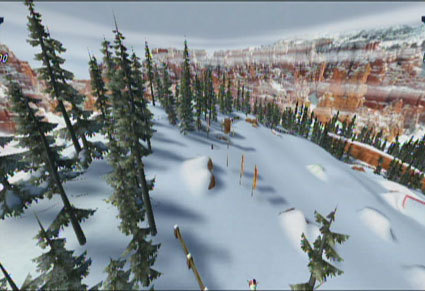Everything There Is To Know About the Xbox: Technology, Games, Accessories and What's At Stake
3D: Its Power And Functionality, Continued
In comparison to Playstation 2, the image quality is clearly superior. At the theoretical performance level, the graphics architecture of the Xbox is somewhat less powerful than GeForce 3 Titanium 500, except for the additional pixel shader unit, and far behind the GeForce 4 Ti 4400 and Ti 4600.
The geometric transformation and lighting computation unit (T&L) seems identical to the one in the GeForce 3s, meant to relieve the CPU from repetitive and often complex computations for an X86 processor. At any rate, this fixed T&L unit risks being supplanted in the hearts of developers by the two parallel vertex shaders, which offer impressive computational power with geometric details. Remember that the vertex shaders offer a wide range of possibilities to developers for skeletal animation, facial animation or any other complex movement. Furthermore, bump-mapping (DOT3) is also possible, offering exceptional visual quality without depleting the console's other resources. The two units make it possible to produce more complex animations, or to produce them more quickly. The first available titles don't use the vertex shaders very much, since this technique makes the development of a new 3D engine necessary.
Playstation 2 offers less powerful hardware and is far less equipped with 3D functions. As far as the geometry is concerned, the Emotion Engine and its 294 MHz RISC core does not have a T&L coprocessor, even if it does offer sufficient polygon rendering. Therefore, it is mainly the Graphics Synthesizer (GS) that remains below the capacity of the NV2A. One wonders what the developers are doing with the sixteen-pixel pipeline that this 147 MHz chip offers! Actually, the strength of the GS is mainly in its capacity for parallel computations, and not in its functions. That is why the PS2 is clearly more complex to program than the Xbox, because in order to produce certain effects on the PS2, one has to create them from beginning to end by distributing the calculations among different processors. Another important aspect that has often been disparaged since the Playstation's introduction pertains to the four MB of memory dedicated to video. This is much too weak to be able to produce good quality textures.
The Xbox graphics are not just based on good architecture - above all, the hardware is associated with a very powerful and widely used development library (DirectX 8), which offers designers an unprecedented ease of use. Remember Dreamcast and its PowerVR processor, which, even if it didn't realize the hoped-for commercial success, did offer an effective combination hardware/programming library. Considering the ease of programming, the 3D capacity of the NV2A and the freedom offered by the vertex shaders, it is clear that the Xbox has reached a new milestone for console graphics. But the Xbox will also be able to defend itself against the PC for a long time because the architecture is stable enough without having to evolve upwards or worry about downward-compatibility. Hence, the developers will be able to really optimize the games.
Get Tom's Hardware's best news and in-depth reviews, straight to your inbox.
Current page: 3D: Its Power And Functionality, Continued
Prev Page 3D: Its Power And Functionality Next Page APU: The First Audio 3D Chip In A Console-
wow nice but i think xbox will always stand on the cool chart and it's ultra easy but thing is i will try to buy rights and stuff from Microsoft of the original xbox so i can work on it to help give it improvements to it gui plus concidering i do own one xbox myself i think it does need a tune up !Reply
